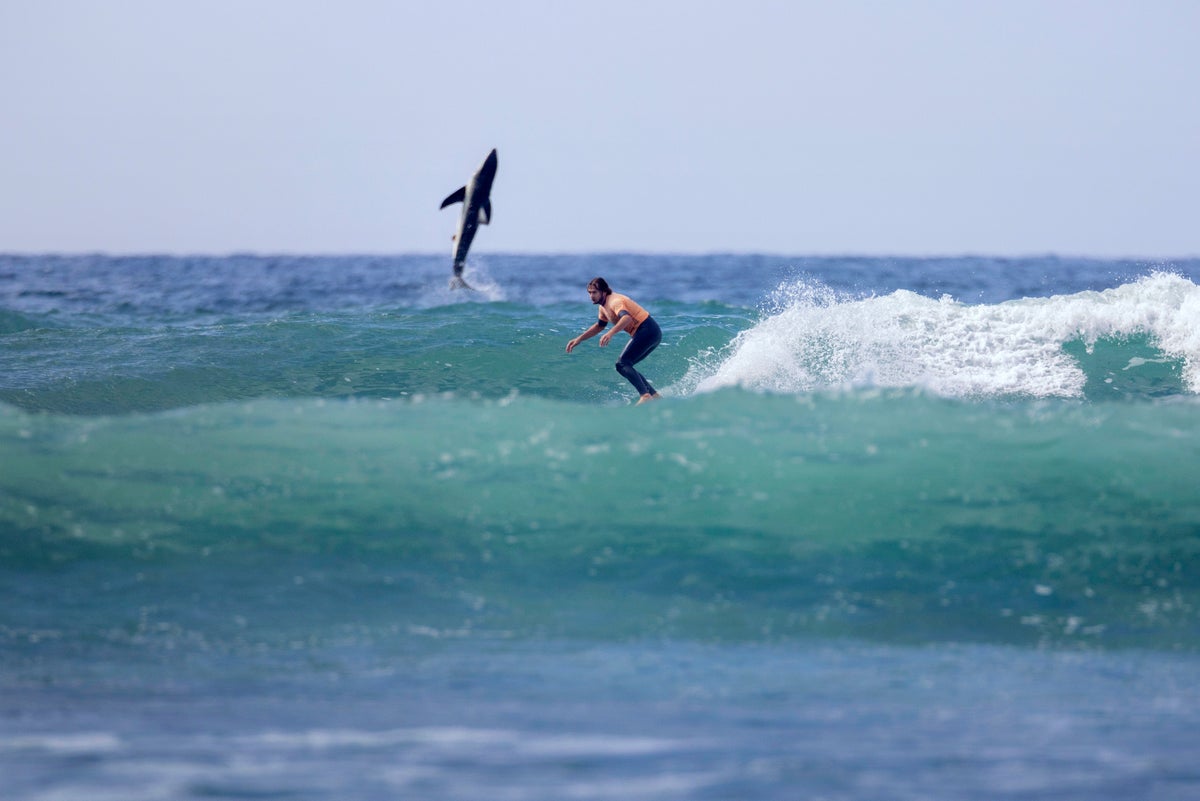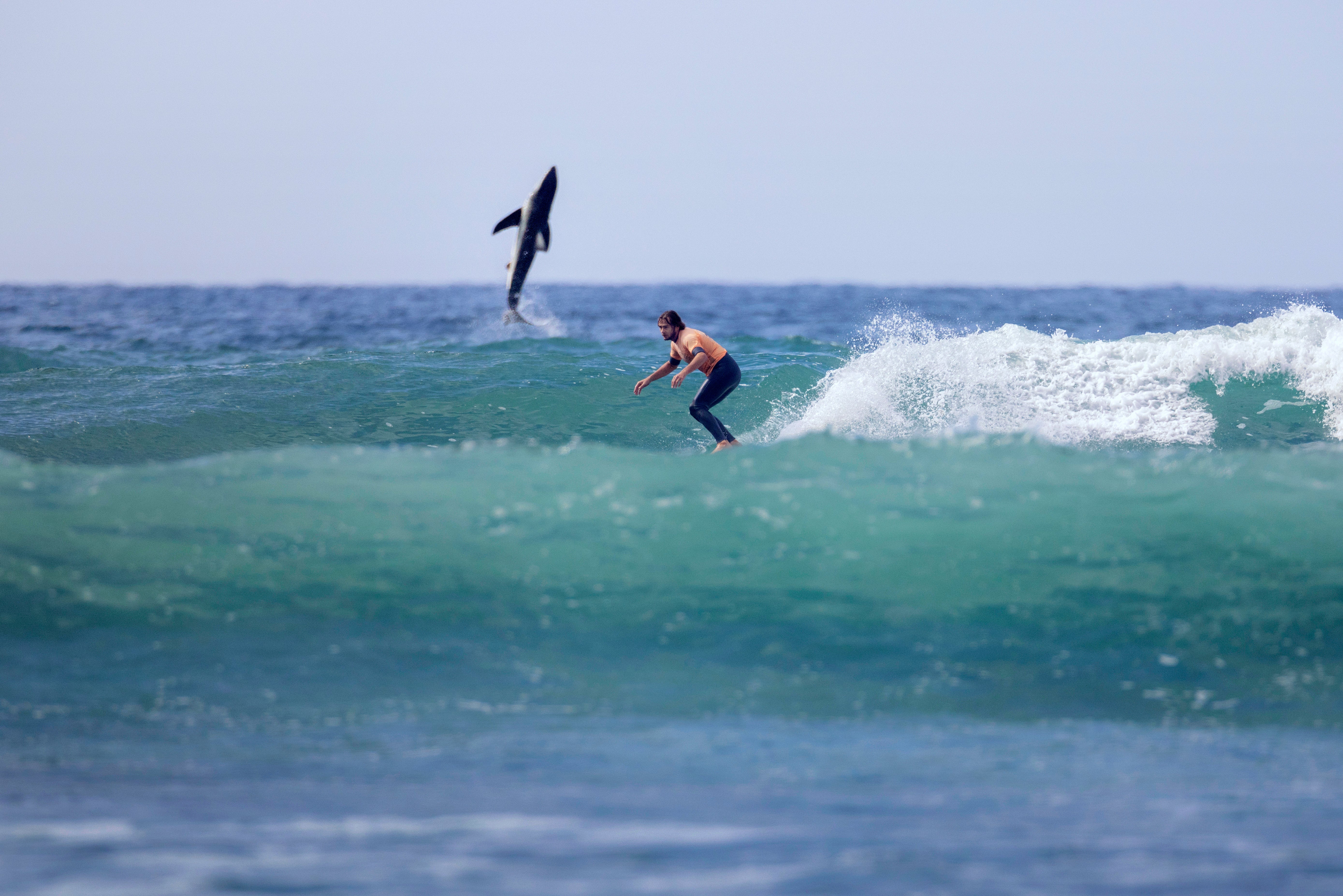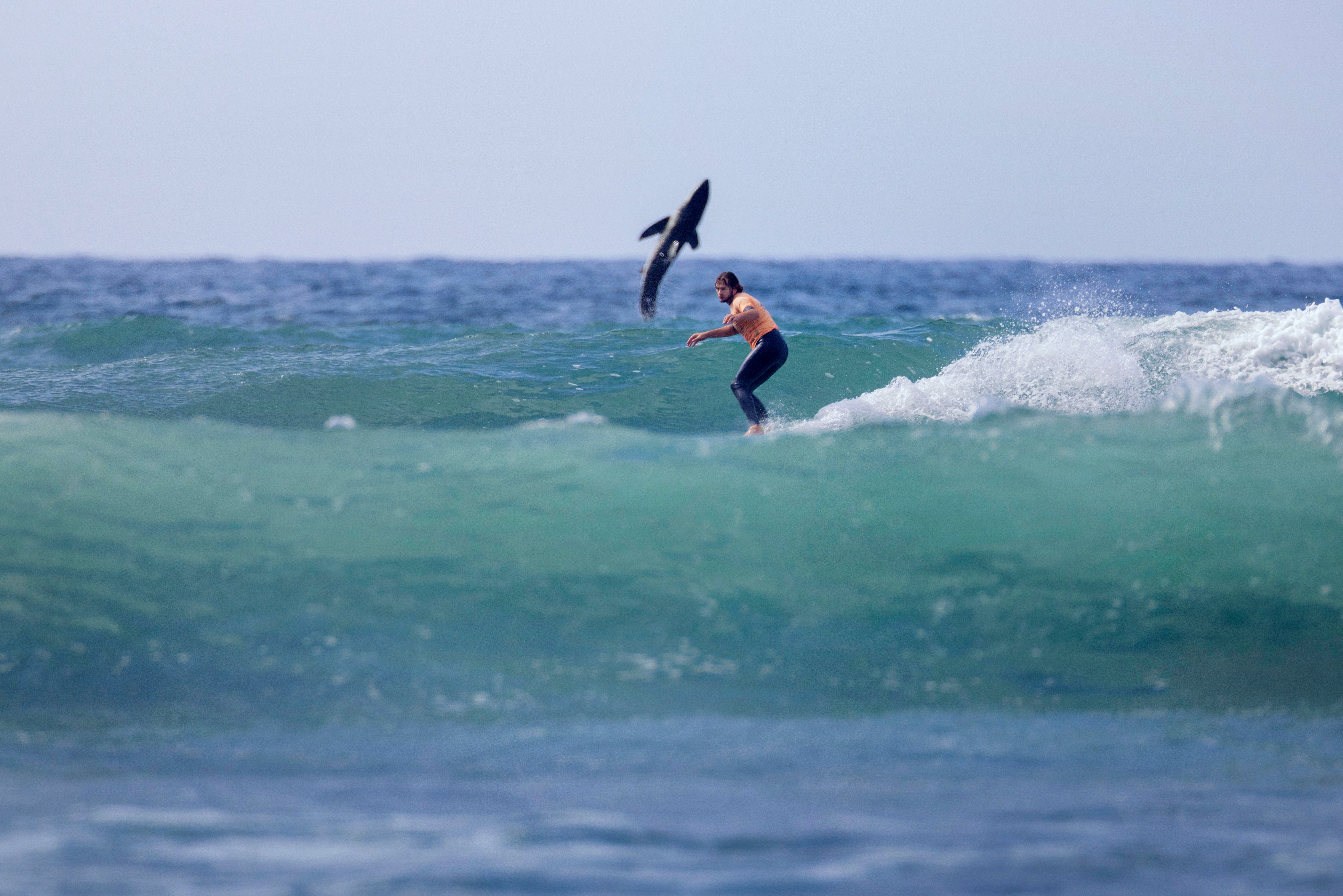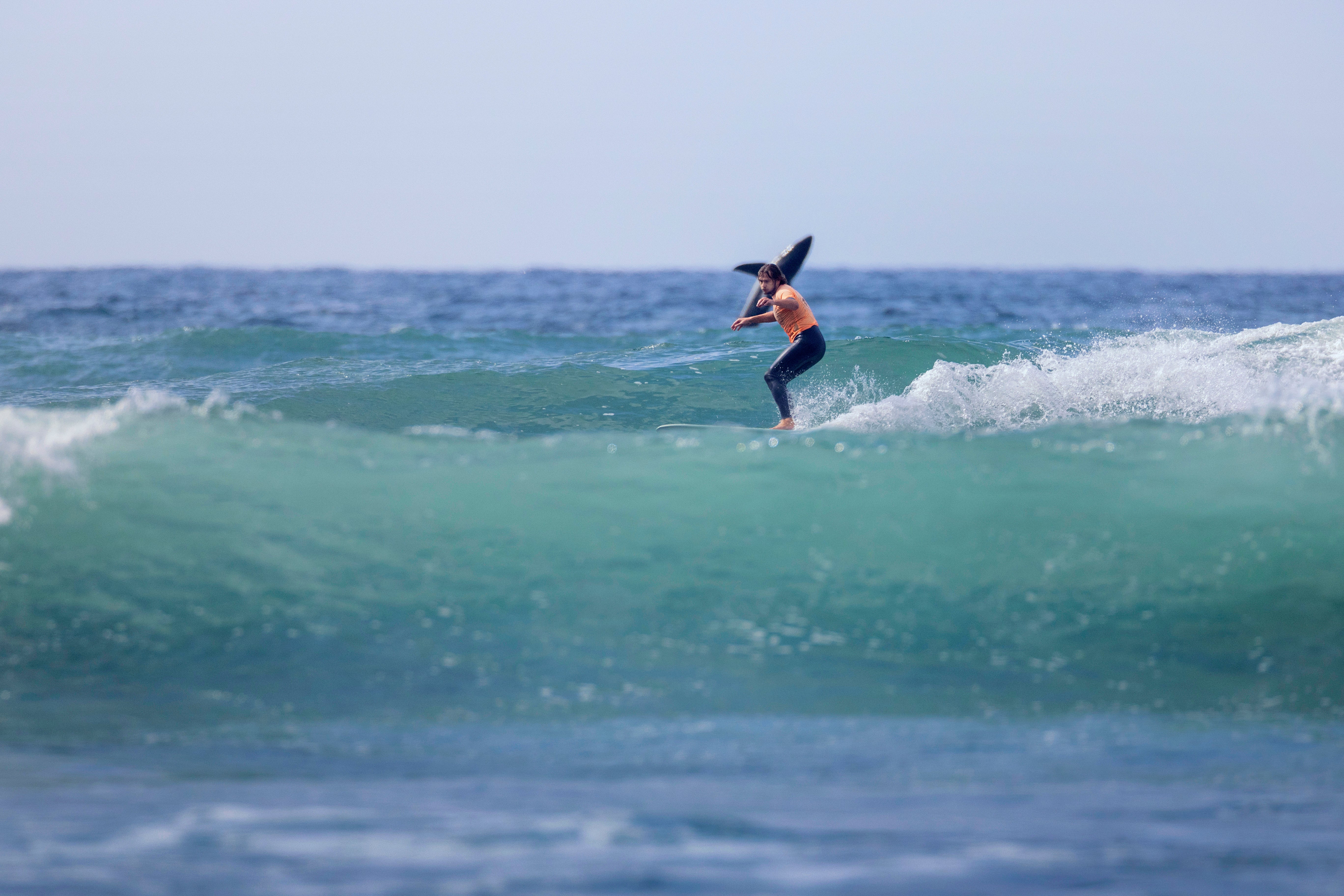
A California photographer captured a “Sharknado” moment as a great white was seen leaping out of the Pacific behind a surfer.
Jordan Anast was taking pictures of a surf competition at San Onofre beach between Los Angeles and San Diego when the dramatic breach occurred.
“I thought, ‘That’s a big dolphin,’” the longtime surf photographer said as he took a picture of surfer Tyler Warren calmly riding a wave.
Mr Anast says that it was only when he looked back at the images he realized what he had captured.
“It was a case of being in the right place at the right time. It’s the kind of shot you only ever get once. It doesn’t even look real, it’s like something out of ‘Sharknado,’” he told The Independent.
“Over the decades I have captured some memorable moments for others, but this is one was for me,” he added on Instagram.
“My passion has always been to stop time for one second, capture a memory for someone or something that will last forever and show the world my pics through my lens. These shots will always be a part of San Onofre history and that is pretty cool.”

Sharknado is a series of sci-fi horror movies in which man-eating sharks are scooped up by water spouts and dump sharks into cities.
Mr Warren, who is also a well-known surfboard maker, told the photographer that he did not even realize that he was in the water with a great white.

The picture was taken during the San Onofre Surf Club’s annual competition on 22 October.

San Onofre State Beach is a known “hot spot” for great white sharks in Southern California, according to marine experts.
It is thought that the sharks are attracted to the area by a plentiful food supply.
Great whites are considered the largest predatory fish on Earth, according to National Geographic, and can grow “to an average of 15 feet in length, though specimens exceeding 20 feet and weighing up to 5,000 pounds have been recorded.”
The outlet also notes that the animals can swim up to 15 miles per hour and often breach like whales “when attacking prey from underneath.”
Attacks by a great white shark are often not fatal, National Geographic says, as the creatures are “naturally curious” and “sample bite” their human targets before releasing them. The publication emphasises that fatal attacks “are typically cases of mistaken identity: Swimmers and surfers can look a lot like their favorite prey—seals—when seen from below.”







